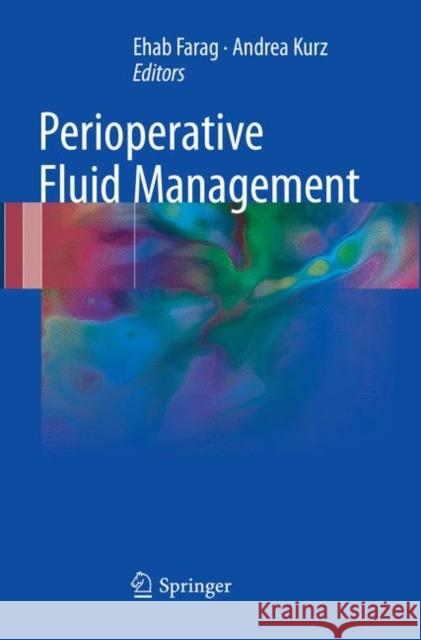Perioperative Fluid Management » książka



Perioperative Fluid Management
ISBN-13: 9783319818283 / Angielski / Miękka / 2018 / 407 str.
Perioperative Fluid Management
ISBN-13: 9783319818283 / Angielski / Miękka / 2018 / 407 str.
(netto: 651,74 VAT: 5%)
Najniższa cena z 30 dni: 655,41
ok. 22 dni roboczych
Dostawa w 2026 r.
Darmowa dostawa!
"The book reviews the history and basic science of fluid management, with a concluding set of cases that demonstrates the application of resuscitation principles. Written mainly by anesthesiologists, this work is relevant to any critical care discipline faced with the need to effectively resuscitate not only perioperative patients, but also individuals with sepsis and neurological crises." (David J. Dries, Doody's Book Reviews, September, 2017)
"This book is divided into 2 main sections: 'Fundamentals of Fluid Management' and 'Case Scenarios.' ... Drs Farag and Kurz cover the more recent and controversial topics in greater detail. We would, therefore, recommend this book, Perioperative Fluid Management, to clinicians hoping to stay on the cutting edge of fluid management ... ." (Brenton Alexander & Alexandre Joosten, Anesthesia & Analgesia, Vol. 125 (3), September, 2017)"This book provides a comprehensive up-to-date review of actual knowledge in fluid management, demonstrations of how that knowledge can be applied to optimise patient management, and insight into possible future developments. We recommend this book to anesthesiologists in training as well as those in senior positions who are interested in keeping their practice modern and in line with current scientific knowledge." (Ellis Muggleton and Tülin Muggleton, Canadian Journal of Anesthesia, Vol. 64, 2017)
Part I. Fundamentals of Fluid Management.- A History of Fluid Management.- The Revised Starling Principle and its Relevance to Perioperative Fluid Management.- The Functions of Endothelial Glycocalyx and Their Effects on Patient Outcomes During the Perioperative Period. A Review of Current Methods to Evaluate Structure-Function Relations in the Glycocalyx in Both Basic Research and Clinical Settings.- Techniques for Goal-Directed Fluid Management.- The Perioperative Use of Echocardiography for Fluid Management.- Microcirculatory Blood Flow as a New Tool for Perioperative Fluid Management.- Mean Systemic Filling Pressure Is an Old Concept but a New Tool for Fluid Management.- Restricted or Liberal Fluid Therapy.- The Perioperative Use of Albumin.- The Dilemma for Using Hydroxyethyl Starch Solutions for Perioperative Fluid Management.- Balanced Versus Unbalanced Salt Solutions in the Perioperative Period.- Positive Fluid Balance and Patients’ Outcomes.- Fluid Management and Its Role in Enhanced Recovery.- Part II: Case Scenarios Management During Colorectal, Orthopedic and Spine Cases.- Case Scenario for Perioperative Fluid Management in Major Orthopedic Surgery.- Case Scenario for Perioperative Fluid Management for Major Colorectal Surgery.- Case Scenario for Fluid Therapy in Septic Shock.- Case Scenario for Fluid Management in Liver Resection.- Case Scenario for Fluid Management During Major Spine Surgery.- Case Scenario for Fluid Management After Subarachnoid Hemorrhage in the Neuro-Intensive Care Unit.
Dr. Ehab Farag MD FRCA is Professor of Anesthesiology in Cleveland Clinic Lerner College of Medicine and Director of Clinical Research in Department of General Anesthesia, Anesthesia Institute, at the Cleveland Clinic. Dr. Farag has trained in UK where he received the Fellowship of the Royal College of Anesthetists. Dr. Farag completed his training in anesthesia in Cleveland Clinic and received his fellowship training in Neuroanesthesia in Toronto Western hospital – Toronto University and Cleveland Clinic. Dr. Farag has published 50 peer review publications. Moreover, he edited and authored six books in Neuroanesthesia, Neurosciences, Regional Anesthesia and Fluid Management. Dr. Farag’s research is primarily focused in Neuroanesthesia, Regional Anesthesia and Fluid Management.
This book presents the most recent evidence-based facts on perioperative fluid management and discusses fluid management from basic sciences to clinical applications and the patients’ outcomes.
Recent advances in understanding the Revised Starling principle with new concepts in tissue perfusion and the most recent techniques of perioperative goal directed fluid management are described. The endothelial glycocalyx functions and the influence of fluid management on its integrity are covered in detail; moreover, the techniques for its protection are also discussed. The dilemma of perioperative use of hydroxyethyl starch solutions and the resurgence of interest in using human albumin as an alternative colloid is explored. The problems of using unbuffered solutions during the perioperative period and comparison between restrictive versus liberal fluid management are discussed in full.Perioperative Fluid Management will be of interest to anesthesiologists and also intensivists.
1997-2025 DolnySlask.com Agencja Internetowa
KrainaKsiazek.PL - Księgarnia Internetowa









